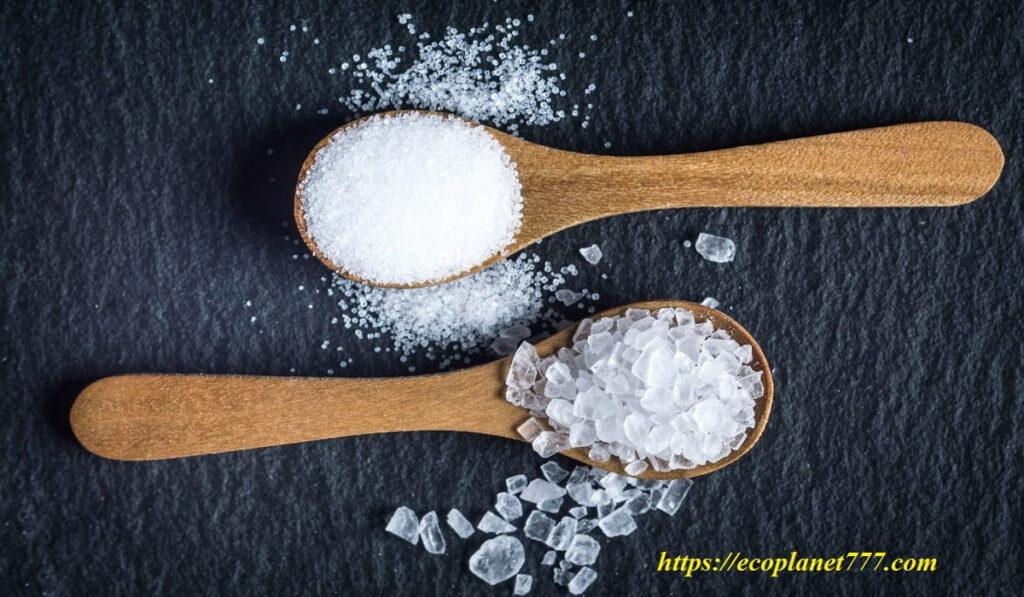Sea salt is known for its health-promoting minerals, therapeutic properties, and natural harvesting process. It is usually not processed, as it is produced directly from the evaporation of sea water. Due to minimal processing, sea salt contains various trace elements, such as: magnesium, calcium, zinc, iron, potassium.
Let’s take a closer look at sea salt treatment at home.
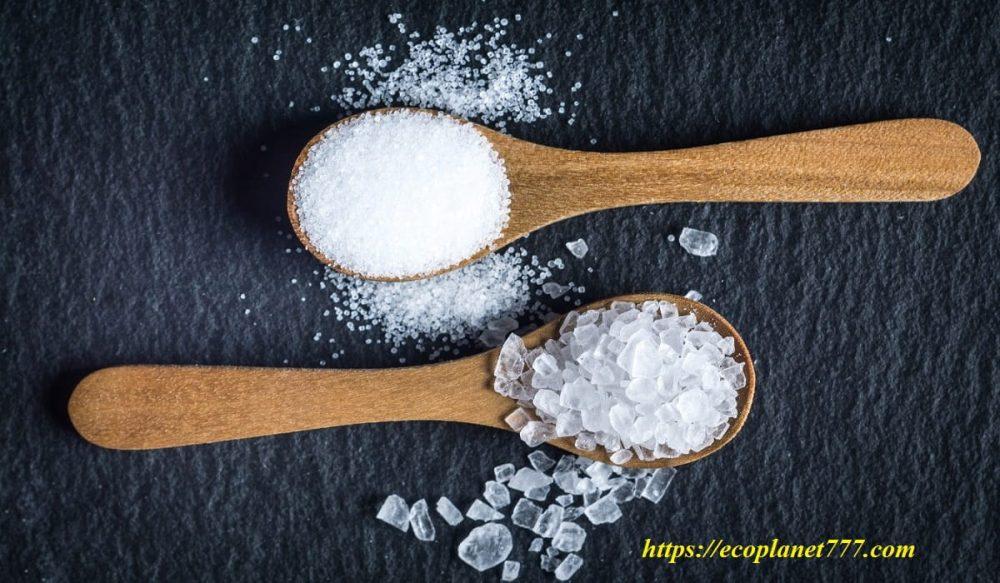
Sea salt bath treatment
Most people use bath salts for relaxation and relaxation, but are unaware of its enormous health benefits.
Baths with sea salt relieve the symptoms of many skin diseases: psoriasis, eczema, atopic dermatitis and acne. They reduce irritation, unpleasant itching, relieve inflammation and relieve unpleasant symptoms. Other benefits of taking sea salt baths include: stimulating blood circulation, relieving muscle pain, relieving muscle spasms, relieving joint stiffness, and improving leg and foot health.
In addition, sea salt helps cleanse and detoxify the largest organ in the body, the skin. Bath salts dissolve easily in warm water and are used for a variety of purposes, from stress relief to sore feet, as well as an easy and inexpensive way to treat mental and physical illnesses.
Magnesium absorption is another important benefit of sea salt baths. This can be useful for people with a deficiency of this trace element in the body.A 2004 study of 19 participants found that 17 of them had elevated levels of magnesium and sulfate in their blood after salt baths.
Taking a sea salt bath before bed can also help you fall asleep better.
How to take a sea salt bath

To take a sea salt bath, the following steps are recommended: Add 1/4 to 2 cups of salt to a standard-size bath filled with water in whatever way suits you. Adding essential oils such as lavender or peppermint can provide additional aromatherapy benefits such as relaxation and mood enhancement. Take a bath for 15-20 minutes. After finishing the procedure, dry the body and apply a moisturizer to the skin.
Treatment of eczema with sea salt
Sea bath salts can be used to treat inflammation and irritation of the skin on the hands and feet caused by eczema, psoriasis, and contact dermatitis. The National Eczema Association recommends adding no more than 1 cup of salt to your bath during a flare-up to prevent burning while bathing.
To prepare a bath to relieve itchy and irritated skin due to eczema: Take 1 cup of standard size sea salt bath. Pour it into warm water and mix with your hand to dissolve all the grains. Add 3 or 4 drops of tea tree essential oil to a salt bath. This oil has antimicrobial, anti-inflammatory, and antiseptic properties, making it effective in treating eczema and minor skin infections. Soak in the bath for at least 20 minutes.
Psoriasis treatment with sea salt
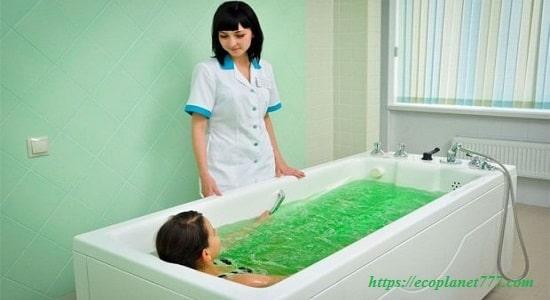
Several studies have shown that Dead Sea salt is especially helpful in treating psoriasis. Symptoms of psoriasis include: itching, soreness and burning, stiff and swollen joints of the legs and arms, ribbed and thick nails, red patches on the skin with silvery thick scales.
A 1997 study of 25 people with psoriasis vulgaris (chronic or long-term psoriasis) found that sea bath salt was more beneficial than regular bath salt. The participants were divided into two groups: one used Dead Sea bath salts and the other used regular salt. Both groups used the respective daily 20-minute bath routines for three weeks. After three weeks, participants who used sea salt had a much higher percentage reduction in psoriasis (43.6%) than those who took table salt (24%).
To relieve dry and itchy skin caused by psoriasis: Take 1 cup of sea salt and a tablespoon of olive oil for a standard size bath. Pour the salt into warm water so that it dissolves faster. Add olive oil and stir the bath water with your hand to blend the salt and oil. Take these baths for at least 12 minutes 2 or 3 times a week. You can also add almond oil, oatmeal, or milk powder to your bath to soothe and hydrate your skin.
Treatment of arthrosis with sea salt
The Arthritis Foundation recommends taking warm sea salt baths to relieve joint stiffness and pain, as well as sore leg muscles after a workout.
One unique study was conducted. Thirty patients with classic rheumatoid arthritis were randomly divided into two groups of fifteen patients of the same age, sex, duration and severity of the disease and treatment. All patients were treated once a day with salt baths heated to 35°C for twenty minutes. The first group received Dead Sea bath salts and the second group received regular sodium chloride (NaCl). The study (treatment) lasted two weeks. Clinical parameters were assessed, including the duration of morning stiffness, the duration of a fifteen-meter walk, hand grip strength, activity in daily life. A noticeable improvement in the condition was observed only in the first group for most of the assessed clinical parameters. The maximum therapeutic effect was obtained at the end of treatment and lasted up to one month.
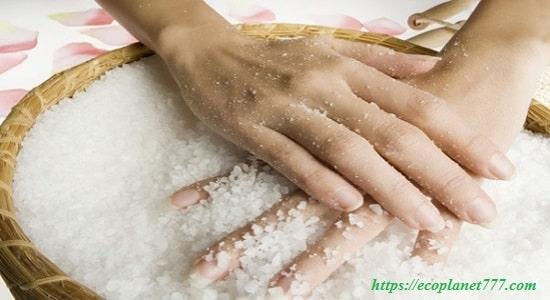
To relieve symptoms of arthrosis, take 2 cups of sea salt in a standard size bath filled with warm water. To dissolve the salt faster, stir it with your hand. Take a bath for at least 20 minutes a day as needed or after a workout.
Some essential oils, such as ginger, may have anti-inflammatory effects.According to a 2016 study, ginger has been proven to have anti-arthritic and protective effects on the joints of the feet and hands in arthritis. Adding a few drops of diluted ginger essential oil to a sea salt bath can provide additional benefits.
Take 1 cup of sea salt, 1/3 cup of almond, olive or coconut oil and 1 tablespoon of vitamin E oil. Mix all the ingredients in a bowl to make a thick paste. Apply a little scrub to the skin of the joints. Wash away. Be sure to use a container with an airtight lid to store the remaining mixture.
Sea salt foot treatment
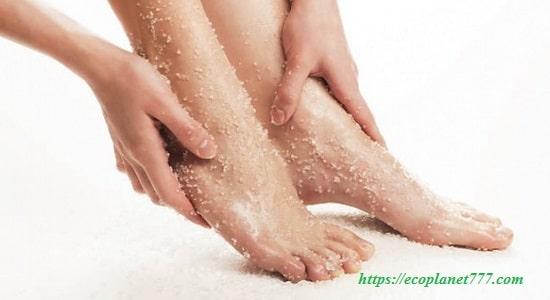
Take foot baths with sea salt to: relieve the symptoms of foot fungus, nail fungus, to relieve pain and inflammation in gout, to eliminate the smell and sweating of the feet.
To get the healing effect of sea salt, make yourself a foot bath: add 1/2 cup of salt to a large bowl of warm water and stir until it dissolves completely. Soak your feet for 12 or 30 minutes to relieve symptoms. Dry your feet thoroughly with a towel.
Repeat this procedure three times a day to treat nail fungus until all symptoms are gone. The addition of diluted tea tree oil has an antifungal effect on the nails.
Soaking your feet in a warm salt bath also improves dry, cracked heels. You can use the shower scrub recipe above to remove dead skin and calluses. Also try a vinegar foot bath.
Heel spurs treatment with sea salt
A heel spur is a condition in which there is an unwanted deposition of calcium under the heel bone. This is often associated with inflammation of the connective tissue between the foot and the heel bone and thus pain. Heel spurs in some cases are very painful – they are described as a knife piercing into the heel – and in other cases they go unnoticed and are detected only with the help of an x-ray.
Pain caused by a heel spur can often be sharp and stabbing, as if a pin were being driven into the leg, especially when walking or standing up after a period of rest. This condition is mostly common among athletes, but overuse of the foot muscles and ligaments can put anyone at risk. Some of the most common risk factors are: excessive running or jogging on hard surfaces, abnormal walking with too much stress on the heel bone, obesity and overweight, regular wearing of inappropriate shoes that do not properly support the arch of the foot, diabetes, people with flat feet or high arches.How to walk with such a disease in order to go about your daily activities and get rid of the pain? Although treatment includes exercise, anti-inflammatory drugs, and in some cases surgery to remove calcium deposits, there is a simple solution that can help you manage or relieve the pain.
Foot bath with sea salt. Pour 1/2 cup of salt into a bowl of warm water, stir until completely dissolved, and dip your feet. Take this treatment for 15-20 minutes a day, several times a week. You can also gently massage your heels with sea salt.
Try adding pure rosemary and lavender essential oils to your water, which have anti-inflammatory properties.
Sea salt nail treatment
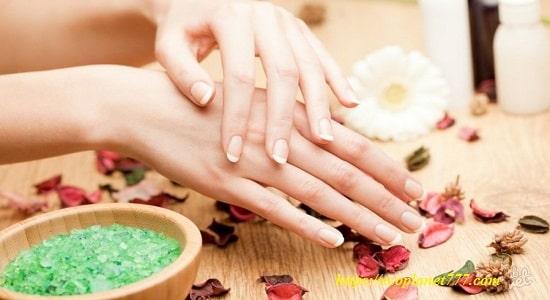
In addition to the health benefits, sea salt is also used for beauty. For beautiful, healthy and strong nails, bathe regularly with sea salt.
Add some sea salt to a bowl of warm water and dip your hands. The duration of the procedure is 15-20 minutes several times a week. This salt bath will strengthen brittle nails and also help get rid of dead skin.
Mix a teaspoon each of salt, baking soda and lemon juice. Add the mixture to warm water, mix well. Soak your nails for 15-20 minutes. After the procedure, blot the skin and apply a moisturizer.
Try another nail recipe. Take 1-2 glasses of water, 2 tbsp. salt, 1 tbsp. l. olive oil (or vegetable oil). Mix all the ingredients thoroughly and dip your hands in warm water for 10-15 minutes.Repeat this method for several days in a row or every few days for several weeks. This procedure will improve the condition of your nails and strengthen them.
Treatment of sinusitis with sea salt
Using a saline solution to wash the nose and sinuses is very effective for sinusitis, because. reduces the symptoms of the disease and shortens the duration of the nasal infection. Sea salt itself prevents the growth of bacteria, so for acute sinus infections, as well as for the common cold, rinsing with saline solution 2-3 times a day is effective. As a result, nasal hygiene is improved, swelling is reduced and inflammation is relieved.
For rinsing, you need to purchase a large syringe (without a needle), or an infant nasal bulb or a special silicone bottle for rinsing the nose, which can be bought at a pharmacy.
To prepare the rinse, take half a teaspoon of sea salt and dilute it in one glass of warm boiled water. You can also add half a teaspoon of baking soda here, it also cleans mucus and bacteria well. Mix all ingredients well.
Take a saline solution. Tilt your head down over the sink and gently squeeze some salty water into your right nostril. Breathe through your mouth. After a few seconds, the solution should exit through the left nostril. Repeat this procedure on the other side. Then blow your nose very gently so that no water enters your ear and causes discomfort.
P.S.
If you liked and found this information useful, please share it on social media. networks with your friends and acquaintances. This is how you support our project “Ecology of Life” and make your contribution to the preservation of the environment!
- Magnetic storms: the sun is testing the planet🌪️ - 13.06.2024
- Why You Should Drink Chicory: Benefits and Harms 🌿 - 09.06.2024
- Innovative Choice: Sproud Milk – Your Ideal Plant-Based Drink 🌱 - 03.06.2024
